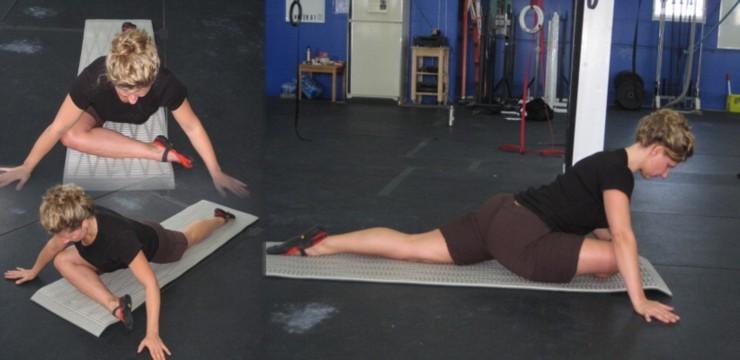Piriformis Stretch
The pictures demonstrates the first stage of the strongest piriformis stretches. To do this stretch you may need to use bolsters to sit on with one hip, or to have the flexibility in both the external hip rotatators and hip flexors to get into position. You may feel the stretching effect in the outside of your thigh or deep in your hip.
Postural Cues:
Sitting on one hip, the knee of the front foot is bent 90 degrees, and the back leg stretched out behind me (it is recommended to do a hip flexor stretch before this and elevate the hip with pillows or bolsters) sit as close to parallel with the front thigh possible. Use the trunk muscles to twist the hip of the back leg to the floor as far as possible. A common mistake with this stretch is to allow the front foot slide in towards the body - taking it out of 90 degrees. When that happens the stretching effect is lost.
Contract - Relax
Press the outside of the front knee to the floor for a count of 5 - then relax and follow with an other contraction this time press the outside of the front foot into the floor for a count of 5-10. Then relax by backing off a little and inhale deeply - and as you exhale lean the center of your body over your front leg. More cues: Draw your chest up and lean forward from the hip aiming your belly button reaching the floor in front of you. Glide your shoulders down and use your arms to support your leaning forward position. Aim the hip further across towards the floor.
Indications where stretch may be useful:
Piriformis syndrome, Lower back muscle strain or pain, Iliotibial band syndrome, Snapping hip syndrome, trochanteric bursitis

